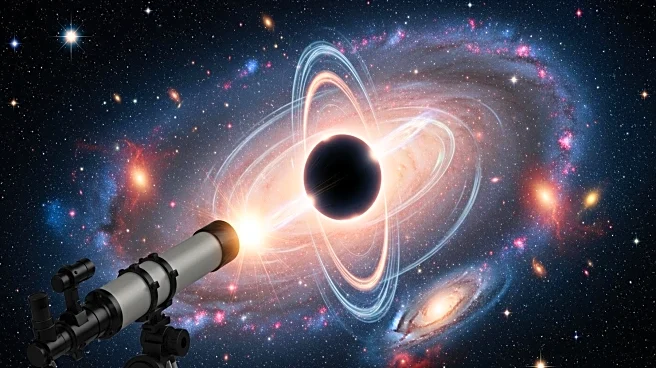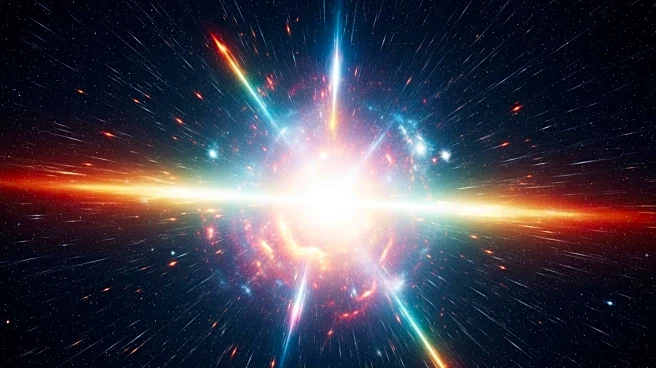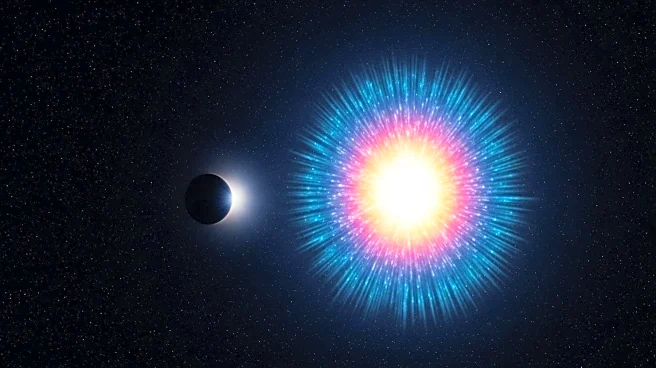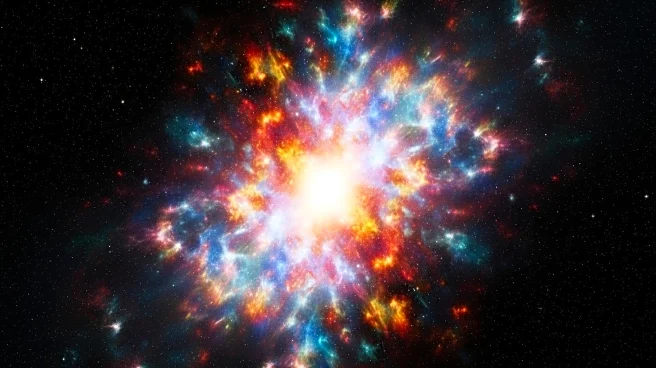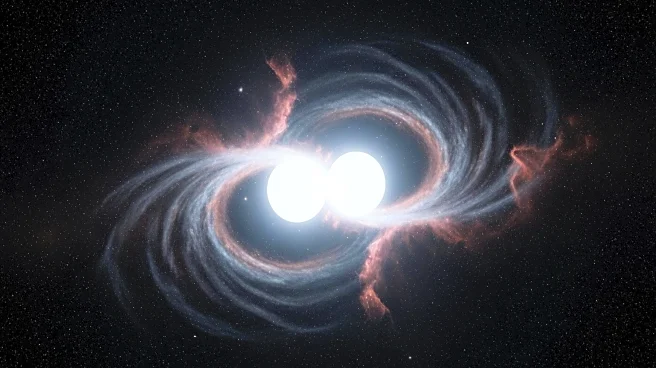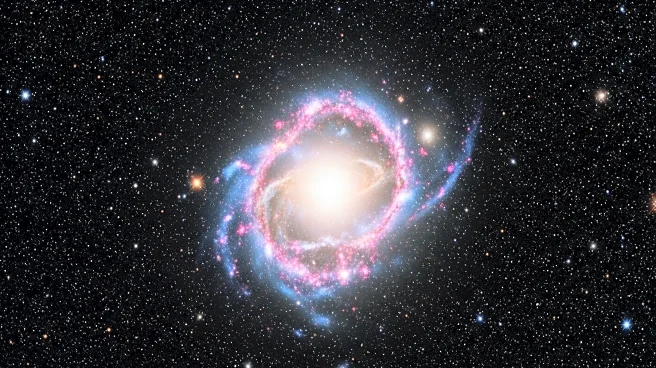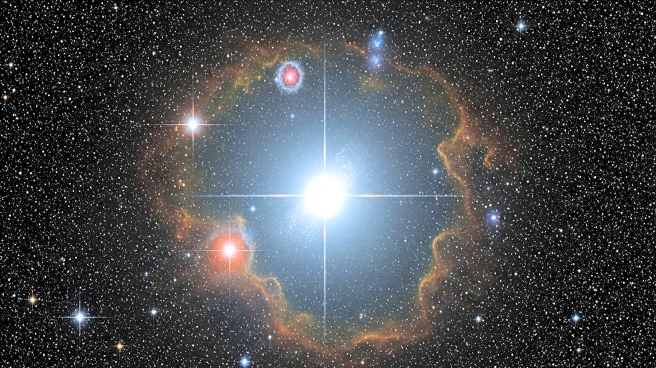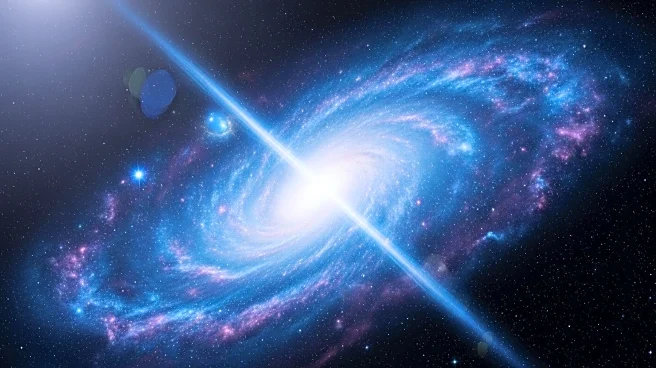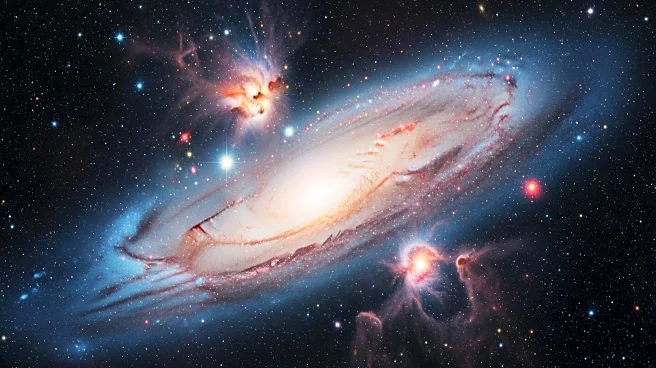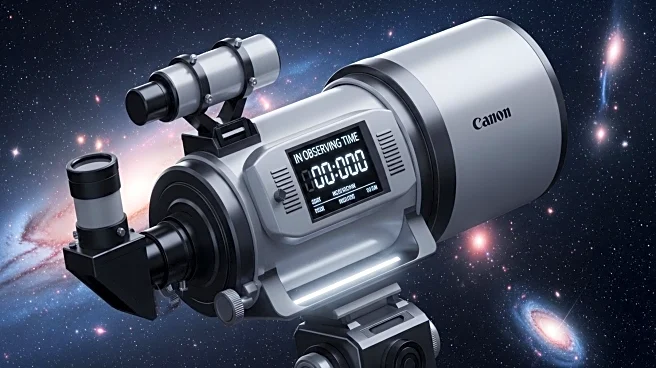What's Happening?
NASA's Chandra X-ray Observatory has uncovered a dramatic internal reorganization within the progenitor star of Cassiopeia A, a supernova remnant. The star experienced inhomogeneous mixing, challenging previous assumptions about the symmetry of supernova explosions. This discovery, led by Toshiki Sato from Meiji University, combines observational data with computer simulations to offer new insights into the final moments of massive stars. The findings suggest that asymmetrical explosions may influence the behavior and velocity of resulting neutron stars.
Why It's Important?
The revelation of asymmetrical supernova explosions marks a significant shift in understanding stellar deaths. Traditionally thought to be symmetrical, supernovae are now seen as chaotic events with multiscale compositional inhomogeneities. This asymmetry could explain the high velocities observed in some neutron stars, impacting theories on stellar evolution and the life cycles of massive stars. The research highlights the importance of advanced observational techniques in unraveling cosmic mysteries and refining models of stellar behavior.
What's Next?
The study of Cassiopeia A underscores the potential for interdisciplinary collaboration in astronomy. By combining observational data with computer simulations, researchers can explore previously inaccessible scenarios. As technology advances, further insights into the universe's violent phenomena are expected, enhancing understanding of cosmic evolution and the role of massive stars.
Beyond the Headlines
The findings challenge traditional views of supernovae, suggesting that internal turbulence might trigger the star's final detonation. This adds complexity to the narrative of stellar death and highlights the dynamic nature of the universe. The research prompts questions about how these insights might influence broader understanding of cosmic evolution.
